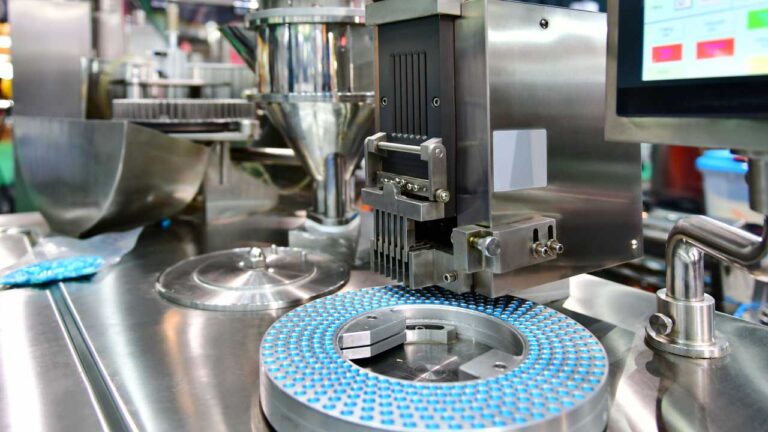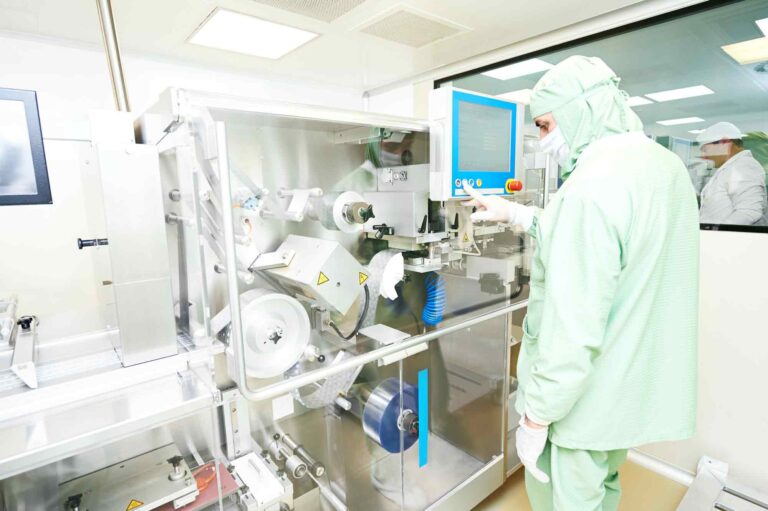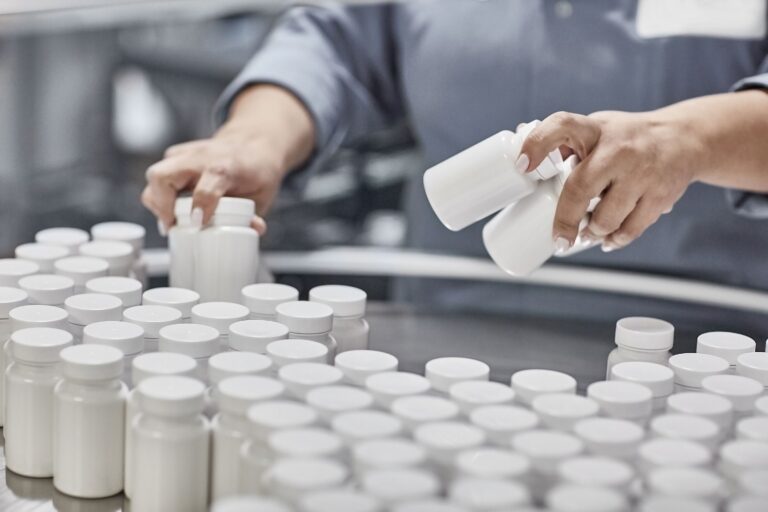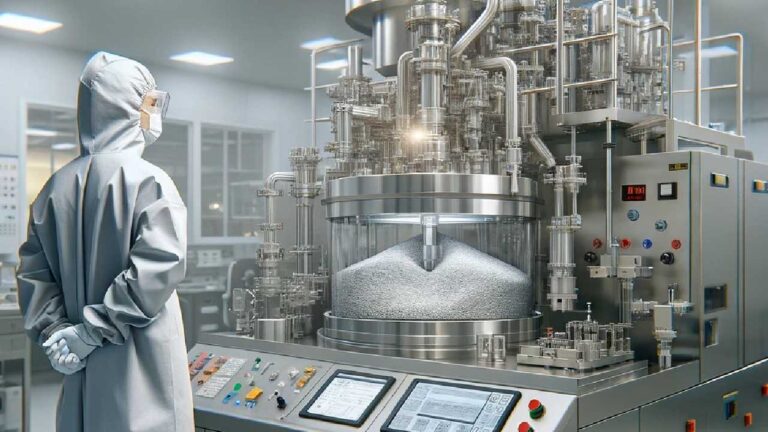Maintaining high standards of quality and safety is essential in pharmaceutical manufacturing. Two fundamental concepts that guide this industry are Good Manufacturing Practices (GMP) and Current Good Manufacturing Practices (cGMP). GMP sets the foundational regulatory standards to ensure that pharmaceutical products are consistently produced and controlled according to quality standards. Meanwhile, cGMP builds upon these principles, emphasizing the use of the latest technologies and practices to uphold the highest level of product safety and efficacy.
The distinction between GMP and cGMP is important, as the latter represents an evolution in regulatory standards that requires pharmaceutical manufacturers and CDMOs (Contract Development and Manufacturing Organizations) to adhere to stringent guidelines that are continuously updated. For those involved in drug development and manufacturing, understanding the difference between GMP and cGMP is not just a matter of regulatory compliance—it impacts product quality, consumer safety, and the ability to navigate a highly regulated environment successfully.
In this article, we’ll discuss the key differences between GMP and cGMP, explore their implications for the pharmaceutical industry, and provide insights to help manufacturers and CDMOs choose the compliance path best suited to their needs.
Historical Context of GMP and cGMP
The journey from GMP to cGMP represents an evolution in pharmaceutical manufacturing standards that reflects the industry’s commitment to improving product safety and efficacy. Good Manufacturing Practices (GMP) originated in the mid-20th century as governments and regulatory bodies recognized the need for standardized quality control in drug production. The initial regulations were foundational, focusing on general guidelines to ensure consistency and prevent contamination.
As technology and scientific understanding advanced, the regulatory framework needed to evolve. This led to the concept of Current Good Manufacturing Practices (cGMP), which emphasized the adoption of contemporary technologies, continual process improvements, and enhanced quality systems.
cGMP was introduced to mandate that manufacturers not only comply with basic quality standards but also adopt the latest innovations and practices in production. This progression towards cGMP underscores the pharmaceutical industry’s commitment to patient safety and sets the benchmark for modern drug manufacturing.
Core Principles of GMP and cGMP
Understanding the core principles of GMP and cGMP is essential to grasp the nuances that differentiate them. These principles shape the manufacturing environment, ensuring quality, safety, and efficacy in pharmaceutical products.
GMP Principles
Sanitation and Hygiene:
GMP emphasizes strict sanitation protocols to prevent contamination, including cleaning and maintaining equipment, facilities, and personnel hygiene.
Quality Assurance:
Manufacturers must establish systems to guarantee the consistent production of high-quality products, meeting specifications for identity, strength, purity, and quality.
Personnel Training:
Ensuring that all personnel involved in production are adequately trained to understand GMP standards and effectively carry out their roles.
Documentation and Recordkeeping:
Accurate recordkeeping of manufacturing processes ensures traceability and aids in identifying issues for continuous improvement.
Validation and Qualification:
Production equipment andprocesses must be validated to produce consistent, reproducible results, confirming that the product meets all specifications.
Facilities and Equipment:
GMP requires facilities and equipment to be designed and maintained to prevent contamination and mix-ups.
Inspections and Audits:
Regular inspections and audits are conducted internally and externally to ensure compliance with GMP standards. Check the detailed principles here.
cGMP Principles
cGMP builds on these foundational principles with a stronger emphasis on technological advancement and continual improvement:
Continual Quality Improvement:
cGMP demands ongoing evaluation and improvement of manufacturing processes, adopting the latest technological advancements to improve quality and efficiency.
Risk Management:
A risk-based approach to decision-making ensures that potential risks to product quality are identified, assessed, and controlled proactively.
Modernized Quality Systems:
cGMP emphasizes advanced quality management systems that integrate technology to streamline operations, improve data integrity, and enhance traceability.
Process Analytical Technology (PAT):
PAT tools are utilized to monitor and control the manufacturing process in real-time, ensuring products consistently meet quality standards.
Advanced Training and Competency:
Training under cGMP focuses on developing a deeper understanding of modern production technologies and regulatory expectations, with competency assessments ensuring consistent adherence to quality standards.
Digital Transformation:
cGMP incorporates digital systems to enhance data collection, analysis, and decision-making processes, providing real-time insights into production quality. Read about more about cGMP here.
Key Differences Between GMP and cGMP
While GMP and cGMP share common goals of ensuring product quality and safety, the evolution of standards from GMP to cGMP reflects the pharmaceutical industry’s growing emphasis on continuous improvement, technology adoption, and risk management. Manufacturers and CDMOs must weigh the cost implications, compliance requirements, and long-term goals when deciding between GMP and cGMP compliance.
Here’s a table summarizing the key differences between GMP and cGMP:
| Aspect | GMP | cGMP |
| Definition | Good Manufacturing Practices: Minimum regulatory standards | Current Good Manufacturing Practices: Updated regulations |
| Quality Standards | Focuses on baseline quality standards | Emphasizes the latest standards and continuous improvement |
| Regulatory Compliance | Flexible, broad guidelines set by FDA | Stricter, requires compliance with current FDA guidelines |
| Flexibility | Flexible implementation | More rigid, requires adherence to up-to-date standards |
| Cost Implications | Lower costs, moderate investment | Higher costs due to continual upgrades and training |
| Production Efficiency | Allows for flexible production processes | Emphasizes stringent controls, requiring real-time monitoring |
| Risk Management | Encourages basic risk mitigation strategies | Requires comprehensive risk management systems |
| Technology | Does not explicitly require advanced technologies | Requires adoption of the latest technologies |
| Data Integrity | Focuses on accurate recordkeeping | Emphasizes secure digital data integrity |
| Personnel Training | Basic training for personnel | Advanced training on modern technologies and regulations |
| Facility Design | Focuses on cleanliness and appropriate design | Emphasizes state-of-the-art design and controlled environments |
| Quality Management | Basic quality management systems | Comprehensive, digital systems emphasizing continuous improvement |
1. Quality Standards
GMP: GMP standards provide a broad framework that guides manufacturers in implementing quality controls. It sets minimum standards that ensure the consistent production of safe and effective pharmaceutical products. GMP is adaptable, allowing manufacturers some flexibility in meeting these standards.
cGMP: cGMP, on the other hand, emphasizes the adoption of the most current quality practices, technologies, and processes. The “current” aspect requires manufacturers to continuously upgrade their systems to align with the latest industry standards, which ensures that products meet the highest quality benchmarks.
2. Regulatory Compliance
GMP: GMP regulations establish a baseline for regulatory compliance. They require manufacturers to have systems in place that are routinely inspected for compliance. GMP inspections focus on the proper functioning of quality systems but do not necessarily mandate specific technological standards.
cGMP: cGMP regulations are more rigorous and demand that manufacturers not only comply with baseline standards but also keep up with advancements in manufacturing processes. The FDA closely monitors cGMP compliance through inspections, ensuring that companies implement the most recent regulatory guidelines.
3. Flexibility and Rigidity
GMP: GMP standards offer a flexible approach to quality compliance, allowing manufacturers to implement guidelines in ways that suit their specific operational needs. This flexibility can lead to variability in how different companies interpret and implement GMP guidelines.
cGMP: cGMP requires a more rigid approach, insisting that manufacturers adopt standardized practices that reflect the latest technological advances. This rigidity ensures uniformity across the industry but requires significant investments in quality management systems.
4. Cost Implications
GMP: Adhering to GMP is generally less expensive because it focuses on broad principles that don’t require continuous technological upgrades. Manufacturers can maintain compliance with moderate investment in quality systems.
cGMP: Compliance with cGMP, however, is costlier due to the continuous need for upgrading equipment, processes, and training. cGMP compliance requires significant investments in technology, data systems, and personnel training to ensure ongoing alignment with current standards.
5. Production Efficiency
GMP: GMP guidelines aim to ensure quality without mandating specific methods, leaving room for manufacturers to design efficient production processes that meet minimum standards.
cGMP: cGMP emphasizes quality through stringent control measures, which may sometimes limit flexibility in production methods but ensure higher levels of safety and efficacy. The focus on real-time monitoring and continuous improvement can enhance efficiency in the long term but requires an initial investment.
6. Risk Management
GMP: GMP guidelines encourage risk management but don’t explicitly require comprehensive risk management systems. Manufacturers focus on basic risk mitigation strategies to avoid quality issues.
cGMP: cGMP explicitly incorporates risk management into its standards, requiring manufacturers to proactively identify, assess, and mitigate risks throughout the production process. This approach reduces quality deviations and ensures product safety.
7. Technological Advancements
GMP: While GMP recognizes the importance of technology, it doesn’t explicitly require the adoption of advanced technologies. Manufacturers can rely on established methods and technologies that meet the necessary quality standards.
cGMP: cGMP demands the adoption of the latest technologies to optimize quality and safety. This includes the use of automation, data analytics, and process analytical technology (PAT) to improve manufacturing processes.
8. Data Integrity
GMP: GMP standards require accurate recordkeeping, but there’s less emphasis on digitization. Paper-based documentation is still common, which can lead to data inaccuracies.
cGMP: cGMP emphasizes digital data integrity, requiring secure and accurate digital systems to capture and store production data. This shift to digitization reduces errors and improves traceability.
9. Personnel Training and Competency
GMP: GMP guidelines mandate basic training for personnel involved in production, focusing on the importance of hygiene and the quality management system.
cGMP: cGMP requires more advanced training programs that encompass modern manufacturing technologies and regulatory requirements. It also emphasizes ongoing competency assessments to ensure adherence to quality standards.
10. Facility Design and Infrastructure
GMP: GMP emphasizes facility cleanliness and appropriate design to prevent cross-contamination. However, specific design requirements are less stringent.
cGMP: cGMP standards emphasize state-of-the-art facility design, requiring controlled environments with advanced equipment to prevent contamination and maintain high-quality standards.
11. Quality Management Systems
GMP: GMP guidelines recommend basic quality management systems that ensure the consistent production of safe and effective products. The focus is primarily on maintaining standard operating procedures (SOPs) and quality controls.
cGMP: cGMP requires comprehensive quality management systems that integrate real-time data monitoring, continuous improvement, and risk management. These systems are often digital and emphasize continual process validation.
12. Specific Regulations
GMP Regulations
GMP regulations establish fundamental guidelines for the manufacturing, processing, and packaging of pharmaceuticals. Key GMP regulations include:
- 21 CFR Part 211: This regulation provides the framework for manufacturing, processing, packing, or holding finished pharmaceuticals. It sets forth requirements related to organization and personnel, building and facilities, equipment, production and process controls, and packaging and labeling controls.
- 21 CFR Part 210: This section defines terms and outlines general provisions applicable to pharmaceutical manufacturing, including definitions of key terms like “current good manufacturing practice.”
- 21 CFR Part 820: This regulation applies to the manufacturing of medical devices and emphasizes quality system requirements. It overlaps with GMP in terms of quality system regulations for the devices’ manufacturing, labeling, and packaging.
cGMP Regulations
cGMP regulations build upon GMP requirements by incorporating newer practices and technologies. Key cGMP regulations include:
- 21 CFR Part 11: Specifies guidelines for electronic records and electronic signatures, ensuring data integrity and security in modern manufacturing environments.
- 21 CFR Part 820: Though it also falls under GMP regulations, the cGMP application emphasizes electronic quality management systems and technology-enhanced monitoring in medical device manufacturing.
- FDA Guidance Documents: The FDA releases guidance documents that reflect current good manufacturing practices, such as risk-based inspections, data integrity, and continuous manufacturing. These documents provide insights into the FDA’s current thinking on regulatory compliance.
Application in the Industry of GMP and cGMP
GMP and cGMP standards are crucial in ensuring product quality, safety, and regulatory compliance across various industries. While GMP lays the groundwork for quality manufacturing, cGMP goes a step further by enforcing the adoption of current best practices and continuous improvement. This dynamic approach enables manufacturers to stay aligned with evolving regulatory landscapes and meet the highest standards for their products.
Pharmaceutical Industry
The pharmaceutical industry relies heavily on GMP and cGMP standards to ensure that medications are safe and effective. GMP guidelines establish standardized procedures for manufacturing processes, which are meticulously followed to guarantee product consistency and minimize quality variations.
The staff involved in pharmaceutical manufacturing undergo thorough training to understand GMP requirements and ensure that every stage of production aligns with these quality benchmarks. GMP standards also emphasize maintaining high-quality facilities and equipment to mitigate contamination risks.
On the other hand, cGMP introduces an ethos of continuous improvement into the pharmaceutical sector, prompting companies to regularly review and update their processes. This approach ensures that manufacturing evolves alongside technological advancements and regulatory changes.
cGMP also fosters a risk-based mindset, enabling proactive identification and mitigation of potential issues. Consequently, pharmaceutical companies often invest in advanced technologies, such as digital quality management systems and real-time monitoring tools, to enhance product quality and traceability.
Biotechnology Industry
In the biotechnology industry, GMP standards play a pivotal role in ensuring the safe and effective production of biological products. Extensive documentation throughout the production process ensures traceability and verifies compliance, while validation protocols establish that manufacturing processes consistently yield products meeting specified quality attributes.
cGMP, on the other hand, requires biotechnology companies to integrate advanced analytical techniques for real-time product quality monitoring. This allows for a quick response to deviations, thereby preventing quality issues. The principle of continuous improvement inherent to cGMP pushes these companies to regularly refine their processes, enhancing both efficiency and product quality.
Medical Device Industry
GMP guidelines are critical for medical device manufacturers, emphasizing the implementation of quality system regulations (QSR) that define the necessary quality management systems. These regulations cover all stages of production, ensuring that devices meet stringent standards through rigorous testing and inspection.
cGMP builds upon GMP standards by requiring medical device manufacturers to adopt advanced manufacturing techniques, like additive manufacturing and digital automation, which improve product consistency and reduce defects. Furthermore, cGMP emphasizes the importance of secure and accurate electronic documentation for all aspects of device production, thereby enhancing traceability and compliance.
Food and Beverage Industry
While not traditionally covered by pharmaceutical-grade GMP and cGMP, the food and beverage industry greatly benefits from adopting these practices. GMP standards enforce strict sanitation and hygiene practices that are crucial for preventing contamination in food and beverage production. GMP also ensures accurate labeling to enhance consumer safety and comply with regulations.
In the food industry, cGMP involves implementing digital quality management systems that streamline production processes and enhance traceability. cGMP standards also emphasize a risk-based approach, enabling companies to proactively identify and mitigate potential food safety risks.
Cosmetics Industry
The cosmetics industry is increasingly adopting GMP and cGMP standards to ensure product safety and quality. GMP guidelines establish proper manufacturing practices that prevent contamination, while also setting personnel hygiene standards to minimize contamination risks during production.
In contrast, cGMP requires comprehensive process controls to ensure the consistency and safety of cosmetic products. Furthermore, cGMP’s emphasis on thorough documentation ensures that every step in the production process is recorded and traceable, reinforcing quality control.
Nutraceutical Industry
Manufacturers in the nutraceutical industry also utilize GMP and cGMP standards to guarantee the quality of dietary supplements. GMP requires adherence to processes that ensure consistency in supplement production, while also guaranteeing accurate labeling and truthful claims to consumers. cGMP goes further by driving the adoption of advanced manufacturing techniques, such as automated blending and packaging, for greater product consistency. Moreover, cGMP emphasizes supply chain transparency, ensuring that all ingredients meet quality standards, which bolsters product integrity.
Benefits and Challenges of GMP and cGMP Compliance
Benefits of GMP Compliance
Quality Assurance: GMP compliance provides manufacturers with a structured framework to ensure product quality and safety. It sets clear guidelines for production processes, equipment, and personnel, significantly reducing the chances of contamination, errors, and other quality issues.
Regulatory Approval: Adhering to GMP standards is a prerequisite for regulatory approval in many industries, especially pharmaceuticals, biotechnology, and food. Compliance ensures that products meet the minimum safety and quality standards, making it easier to gain access to different markets worldwide.
Consumer Trust: GMP compliance demonstrates a company’s commitment to safety and quality, which helps build consumer trust. This trust translates into a positive brand reputation, often resulting in increased customer loyalty and a competitive market advantage.
Process Efficiency: By implementing GMP guidelines, manufacturers can improve their processes through standardization and systematic controls. This leads to enhanced efficiency, reduced waste, and streamlined production cycles, ultimately reducing costs.
Legal Protection: GMP adherence helps companies avoid legal issues by ensuring that products are manufactured according to regulatory standards. This reduces the risk of fines, recalls, and legal disputes related to non-compliance or defective products.
Challenges of GMP Compliance
Implementation Costs: Implementing GMP standards requires significant investment in training, infrastructure, and systems. For many companies, especially smaller ones, these costs can be prohibitive and may require a phased approach to compliance.
Documentation Requirements: GMP compliance mandates meticulous documentation of processes, changes, and deviations. Maintaining such detailed records can be time-consuming and demands significant administrative resources.
Complex Regulatory Landscape: Different regions have varying GMP requirements, and staying compliant with international regulations can be challenging for companies operating in multiple countries. Keeping up with these evolving standards requires continuous monitoring and adaptation.
Training and Awareness: To effectively implement GMP guidelines, companies need to invest in regular staff training and awareness programs. This ensures that employees understand and follow GMP protocols, but it can be resource-intensive to maintain high standards of training.
Continuous Audits: Regular internal and external audits are essential for maintaining GMP compliance, which adds to the administrative burden. Companies need to prepare for and pass these audits to avoid penalties and ensure consistent compliance.
Benefits of cGMP Compliance
Enhanced Quality Control: cGMP takes quality control to the next level by emphasizing continuous improvement. This ensures that manufacturers use the latest technologies and practices, leading to superior product quality and safety.
Improved Market Access: With stringent cGMP regulations, companies are better positioned to meet the requirements of global markets, leading to expanded opportunities and partnerships. cGMP-compliant companies also find it easier to gain regulatory approval for new products.
Risk Mitigation: cGMP promotes a proactive approach to identifying and mitigating potential risks in manufacturing processes. This helps prevent issues before they arise, minimizing recalls and protecting consumer safety.
Customer Confidence: Companies that follow cGMP standards send a strong message about their commitment to excellence. This boosts customer confidence in their products, which can lead to increased sales and brand loyalty.
Operational Efficiency: By implementing continuous improvement practices, cGMP compliance often results in more efficient processes. This reduces waste, increases yield, and improves overall operational efficiency, leading to cost savings in the long run.
Challenges of cGMP Compliance
High Implementation Costs: Adhering to cGMP requires a significant financial investment in technology, infrastructure, and personnel. The costs associated with upgrading facilities, implementing digital quality systems, and ongoing staff training can be substantial.
Complexity and Rigor: cGMP’s emphasis on continuous improvement and staying up-to-date with the latest practices adds complexity to compliance. This requires constant monitoring and updates, which can strain resources.
Change Management: Adapting to cGMP standards often requires significant changes in organizational culture and processes. This can be challenging for companies with deeply ingrained practices, and managing such change requires careful planning and execution.
Resource Intensity: Maintaining cGMP standards requires a high level of documentation, frequent audits, and continuous staff training. This demands significant administrative resources and can be burdensome for some companies.
Regulatory Pressure: cGMP compliance is closely monitored by regulatory bodies, and non-compliance can result in severe penalties. Companies must stay vigilant to ensure adherence to cGMP standards, which adds pressure and requires robust compliance programs.
Role of CDMOs in GMP and cGMP Compliance
Contract Development and Manufacturing Organizations (CDMOs) play a pivotal role in helping pharmaceutical companies achieve and maintain GMP and cGMP compliance. CDMOs specialize in offering end-to-end services that encompass the development, production, and testing of pharmaceutical products. By leveraging their specialized expertise and resources, CDMOs help companies navigate the complex regulatory landscape, ensuring compliance with evolving standards.
In GMP compliance, CDMOs assist by implementing and maintaining structured quality systems, which include rigorous documentation, standardized operating procedures, and thorough validation processes. They support manufacturers in achieving consistent product quality and meeting regulatory standards, thus minimizing the risks of non-compliance.
When it comes to cGMP compliance, CDMOs take this a step further by integrating the latest technological advancements and industry best practices into manufacturing processes. They continuously update their systems to align with evolving regulatory expectations, ensuring that products are manufactured using the most current methods. Their advanced quality management systems enable pharmaceutical companies to maintain high standards of product safety and effectiveness.
Choosing Between GMP and cGMP
Selecting between GMP and cGMP standards is a strategic decision that depends on various factors, including a company’s size, resources, regulatory requirements, and long-term objectives. Understanding the differences and implications of these standards is crucial for making an informed decision.
Business Size and Resources
For small and emerging businesses, GMP compliance is often more attainable due to its relatively lower implementation costs compared to cGMP. GMP provides a solid foundation that meets essential regulatory requirements and ensures product safety and quality without necessitating significant investments in technology or staff. For these companies, the structured framework of GMP provides a cost-effective route to establishing quality standards.
However, for larger companies or those with more resources, cGMP may be the better choice. It involves greater financial investment, but it also demands continuous improvement in technology, processes, and quality control. This can lead to better efficiency and product quality, which is crucial for companies seeking to expand into competitive or global markets.
Market and Regulatory Requirements
The market a company operates in is a critical factor in deciding between GMP and cGMP. For businesses targeting local or less regulated markets, GMP compliance often suffices to meet regulatory requirements. However, for companies operating in highly regulated industries or aiming to penetrate international markets, cGMP compliance is essential. The rigorous standards of cGMP assure regulatory bodies and customers that the company is committed to continuous improvement and up-to-date practices.
Moreover, the nature of the product being manufactured can influence this decision. For instance, manufacturers of high-risk products like injectable drugs might opt for cGMP compliance, given the higher safety and quality standards required for these products.
Long-Term Business Objectives
A company’s long-term vision plays a significant role in this decision. If the goal is to maintain a consistent level of production without significant changes in the near future, GMP compliance can provide a stable regulatory framework. It helps to establish robust production systems that meet quality requirements while allowing for flexibility in implementation.
In contrast, companies focused on innovation, rapid growth, or expansion into new markets might benefit from cGMP compliance. cGMP’s emphasis on continuous improvement aligns well with dynamic business models that prioritize quality, efficiency, and staying at the forefront of technological advances. Investing in cGMP standards can signal to investors, partners, and customers a dedication to high-quality standards and innovation.
Compliance Challenges
Each compliance pathway comes with its own set of challenges. GMP compliance requires comprehensive documentation, staff training, and regular audits to maintain standards. cGMP compliance, on the other hand, demands ongoing investments in technology, process upgrades, and staff development. It also requires vigilant monitoring of the regulatory environment to stay updated with the latest practices.
Closing Thoughts
GMP and cGMP standards are integral to the pharmaceutical industry, each serving different needs based on company size, market requirements, and long-term goals. While GMP provides a solid foundation for manufacturing practices, cGMP emphasizes continuous improvement to ensure products are manufactured using the latest technologies and best practices.
Understanding the differences between GMP and cGMP is crucial for pharmaceutical companies and CDMOs to make informed decisions and maintain regulatory compliance while ensuring the safety and efficacy of their products.






